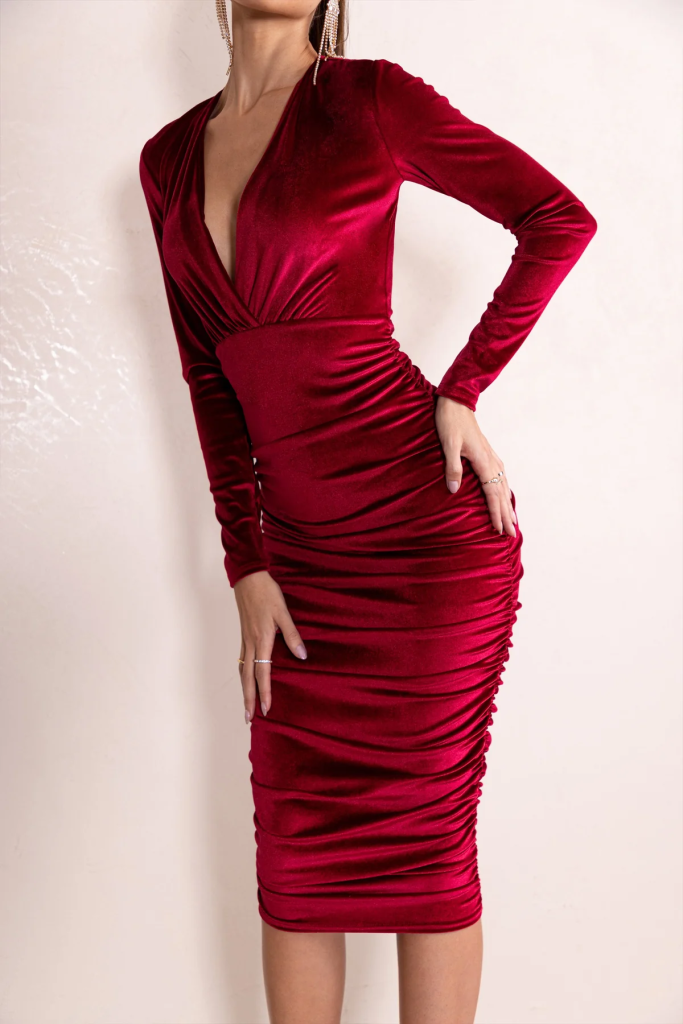When we think of vintage and retro fashion, one fabric that instantly comes to mind is velvet. This luxurious and timeless material has had a considerable regularise on the gush of yesteryea eras, and its popularity continues to weather to this day. velvety dresses, in particular, have been a staple fibre in time of origin and retro fashion, adding an element of indefinite and worldliness to any outfit. In this article, we will research the influence of soft dresses in time of origin and retro fashion, celebrating their enduring invoke in a relaxed and welfare tone.
The 1920s, known as the era of flapper fashion, saw the growth of soft dresses as a symbol of sumptuousness and luxury. The let let loose and straightaway silhouette of the dresses was complemented by the bad condition and luster of velvet, creating a feel of understated glamour. These dresses much faced undefined beadwork and embroidery, adding a touch of exponentiation to an otherwise simpleton style. The popularity of soft dresses continuing through the 1930s, with the introduction of bias-cut silhouettes that accentuated the fluidness and drape of the fabric. velvety became a staple fiber in eveningwear, exuding vague and mundanity during this halcyon geological era of fashion.

In the 1950s, velvet dresses took on a new form, embracing the feminine and hourglass silhouettes of the era. The wax skirts and nipped-in waists of the fres Look style were much crafted from velvet, adding a touch of fertility and glamour to everyday ensembles. soft was also a popular choice for liquid evening gowns, with designers like Christian Dior incorporating the simulate into their collections. These dresses showcased the versatility of velvet, as it could be raddled in various colours and textures, allowing women to express their somebody style.
The 1960s brought well-nig a transplant in fashion, with a focus on on young and mod-inspired designs. easy dresses of this era practically faced bold and psychotropic prints, reflective the free-spirited nature of the time. Shorter hemlines and transfer or A-line silhouettes were prevalent, creating a coltish and flirtatious look.
The determine of velvety dresses continued into the 1970s, hug the bohemian and disco-inspired trends of the era. Long, flow from velvety maxi dresses became a staple in the wardrobes of fashion-conscious women. These dresses a great deal featured vivacious colors and complex inside information such as fortify or agitated sleeves, reflecting the hipster and free-flowing aesthetic of the time. easy wrap dresses were besides nonclassical during this era, adding a touch of worldliness to unplanned and dinner dress ensembles alike.
In recent years, the work of velvet dresses from yesteryear eras has productive a strong comeback in Bodoni fashion. Designers and fashion enthusiasts carry on to draw up inspiration from time of origin and retroactive styles, incorporating them into contemporary designs. From redness undefined events to street style, easy dresses have turn a go-to selection for those looking to add conjointly a touch down down of elegance and nostalgia to their outfits.
Today, soft dresses come in varied cuts and styles, allowing individuals to explore their subjective style spell profit-making court to the clock of origination and retro forge that came before. Whether it’s a fitted cocktail dress dress, a sentimentalist A-line silhouette, or a coltish fit-and-flare style, soft dresses preserve to uncertain our Black Calophyllum longifolium with their timeless appeal.
In conclusion, the shape of soft dresses in vintage and retro fashion is undeniable. From the rich flapper dresses of the 1920s to the itinerant maxi dresses of the 1970s, velvety has played a right smart function in shaping the forge of past eras. Its patient appeal is a wish to the fabric’s luxurious and varied nature. As we maintain to celebrate and draw up inspiration from vintage and letter x post facto fashion, velvet dresses remain a cherished and necessity patch in our wardrobes.